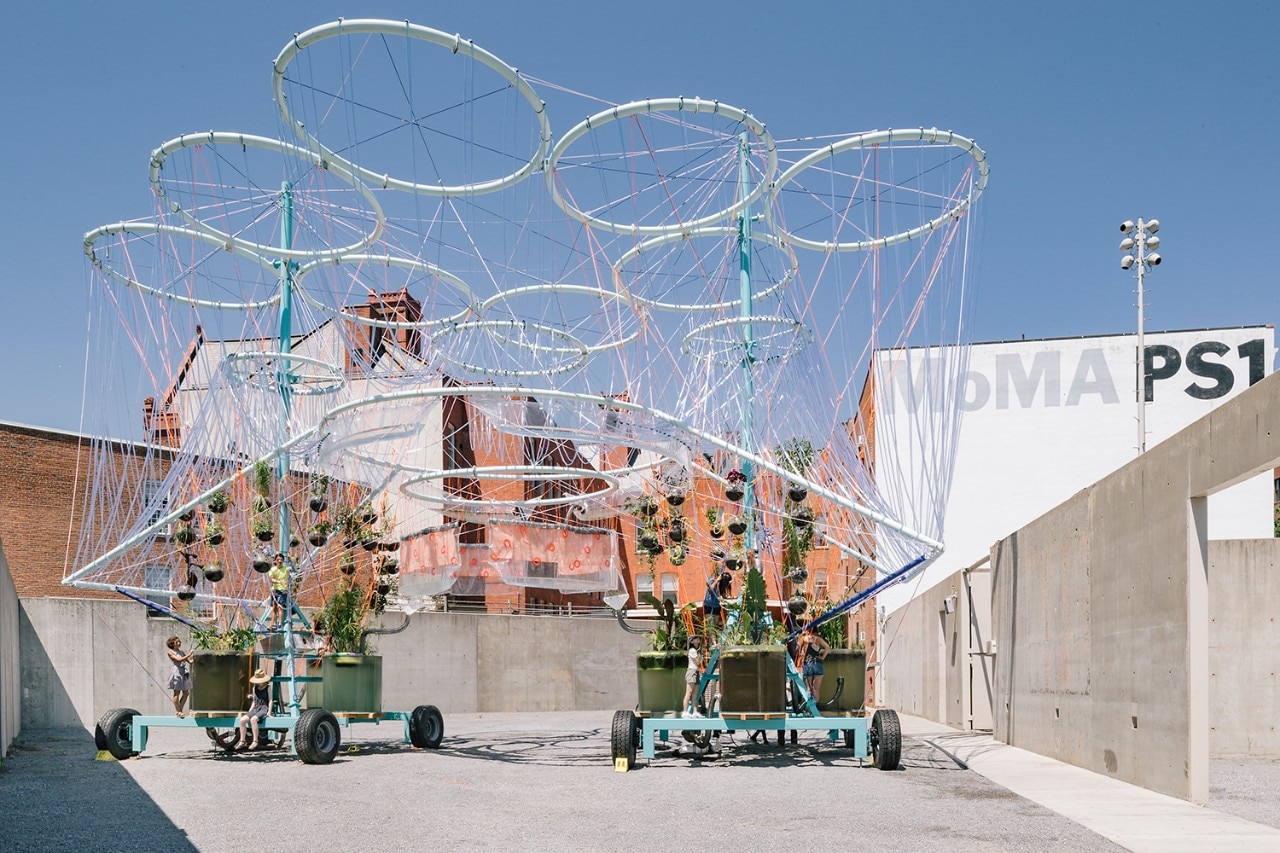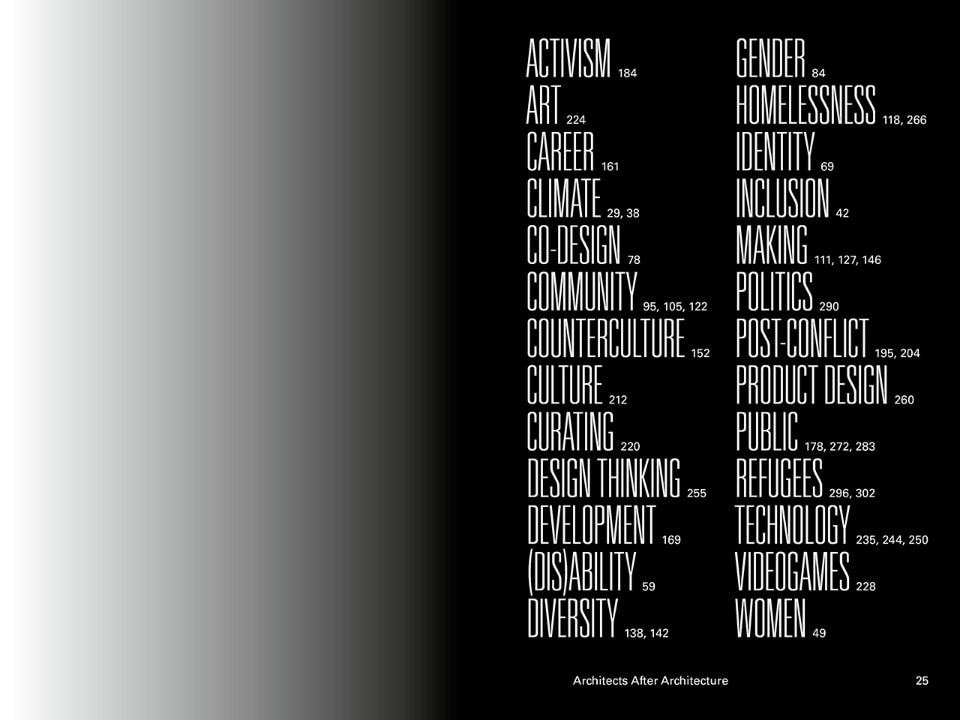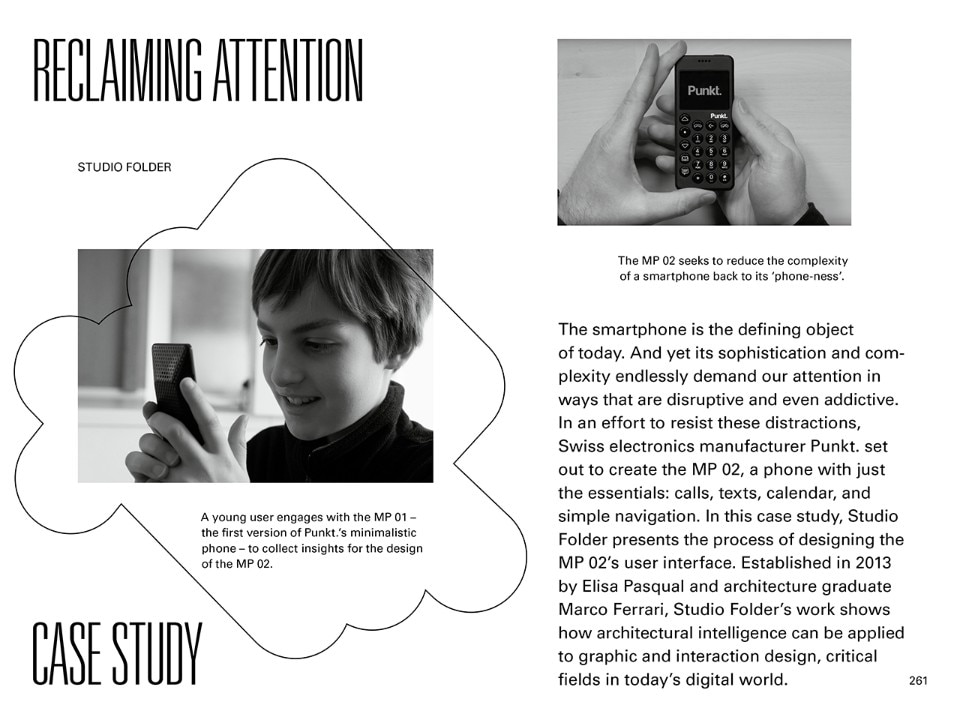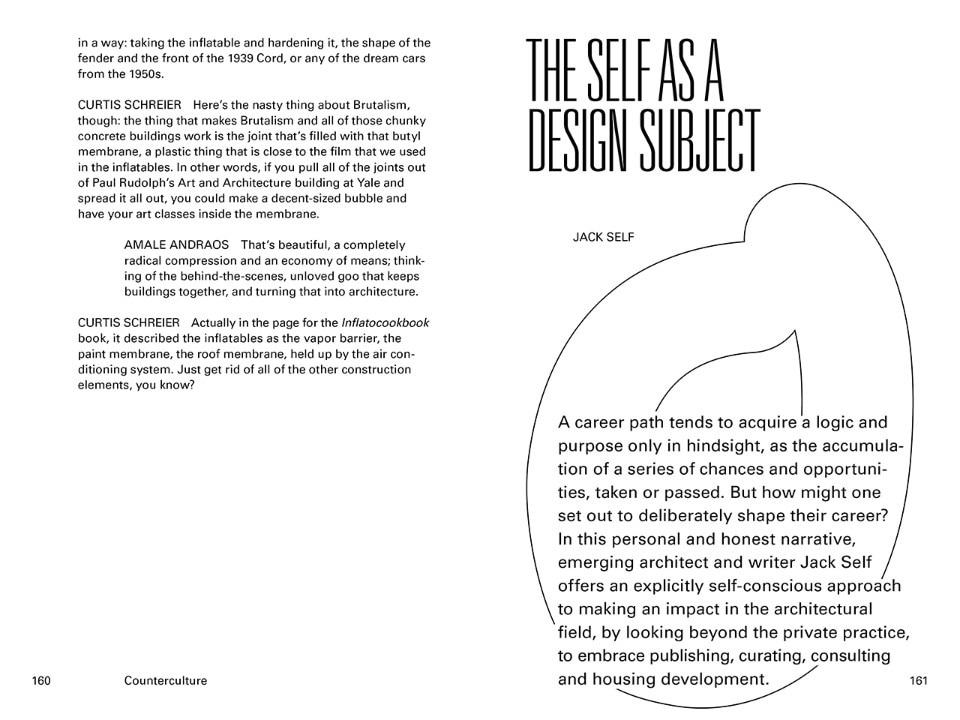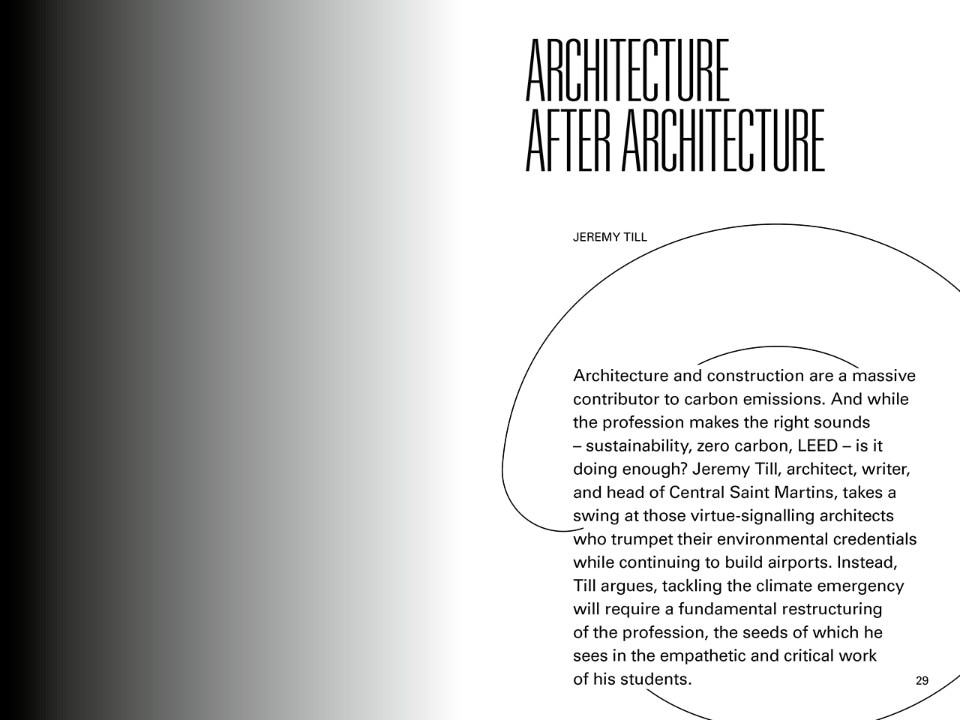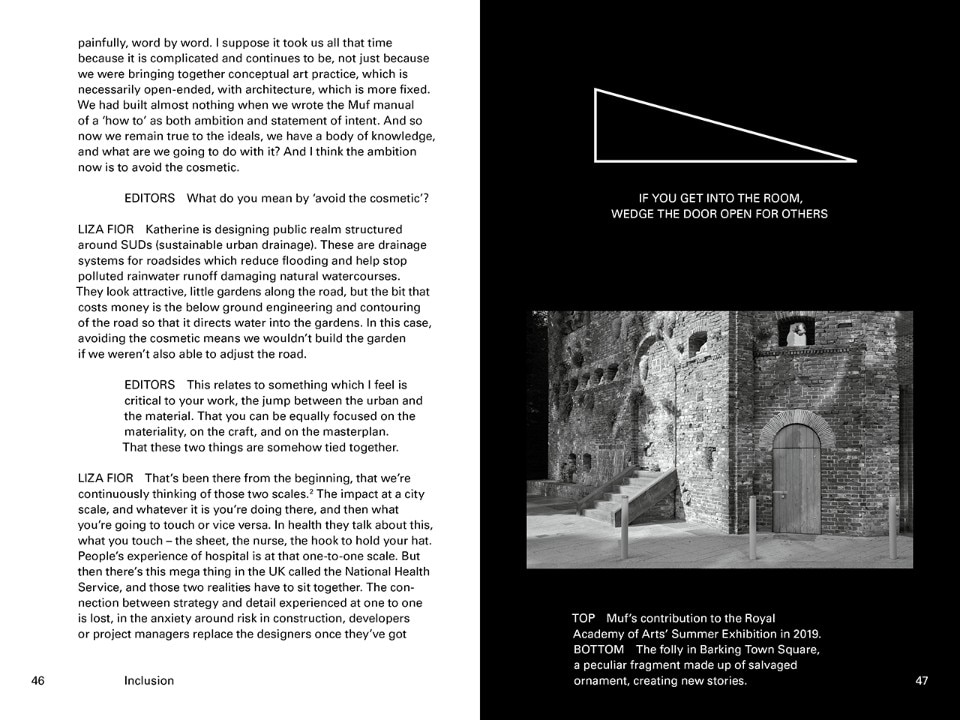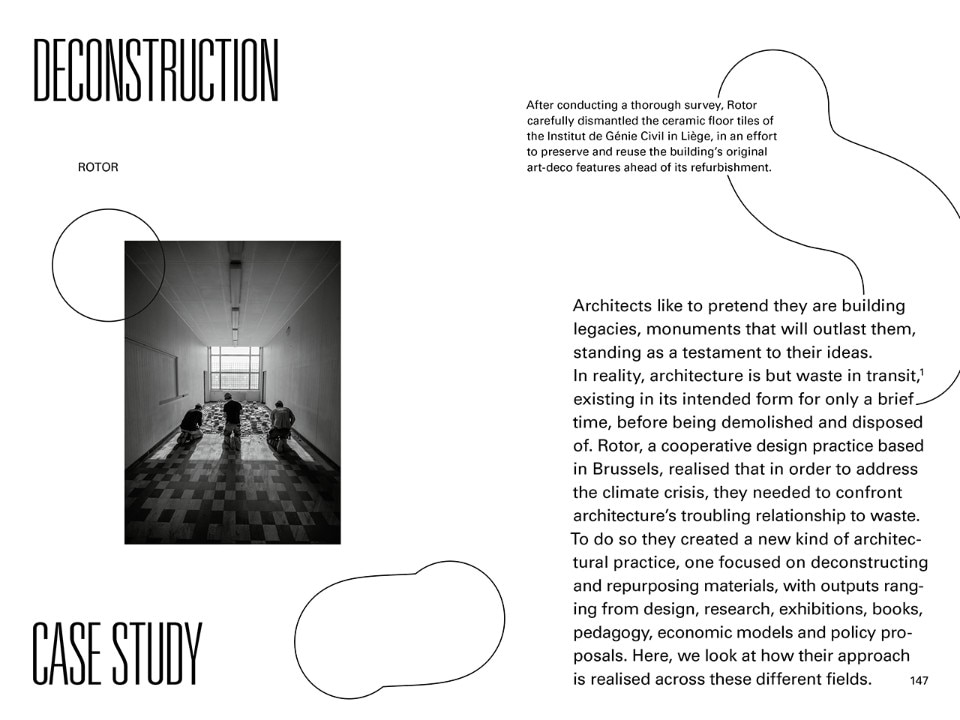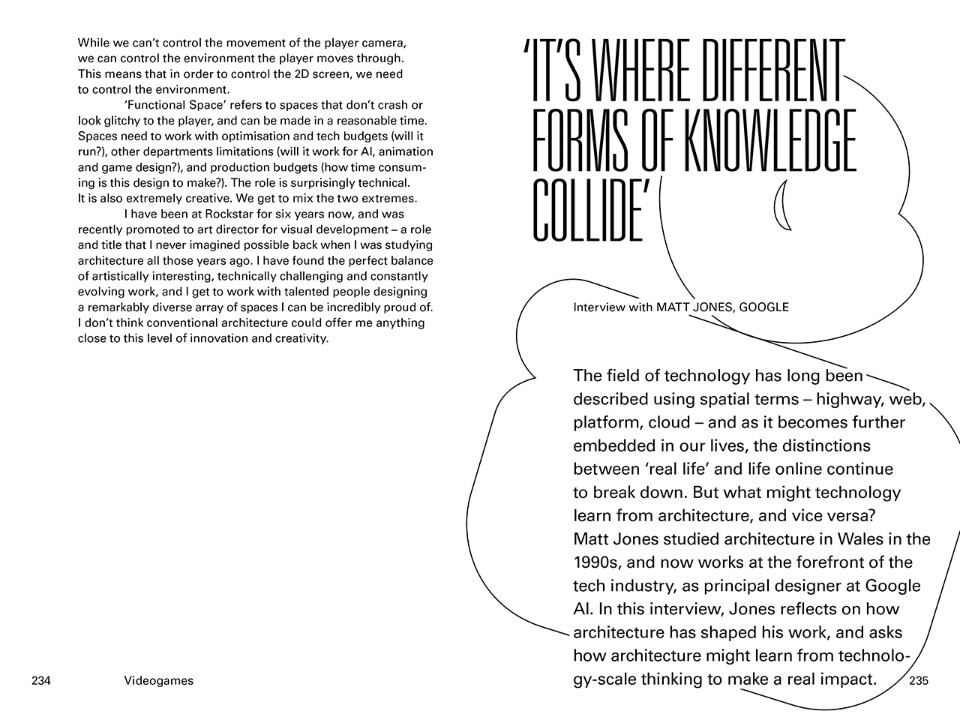“Architecture is the masterly, correct and magnificent play of masses brought together in light.” Every designer should be familiar with this definition by Le Corbusier, one of the fathers of Modernist thought in architecture and a model of the architect-hero who wants to change the world. Le Corbusier is the quintessential example of the solitary thinker, who single-handedly answers questions that then have an impact on the entire community.
In recent decades, this figure has evolved (or degenerated) into that of the archistar, the designer-globetrotter, as famous as a rock star, capable of enriching every global metropolis with buildings of exaggerated or refined forms, often working for global capital giants or unscrupulous clients.
But beyond this narrative – which is unfortunately dominant today – a new set of alternatives is spreading in recent years, looking at architecture as a collective practice or as a tool for examining complex realities, in response to the ever-changing and multifaceted needs of our contemporary world. These practices are the focus of Architects After Architecture, a publication edited by Harriett Harriss, Rory Hyde and Roberta Marcaccio, published by Routledge at the end of 2020.
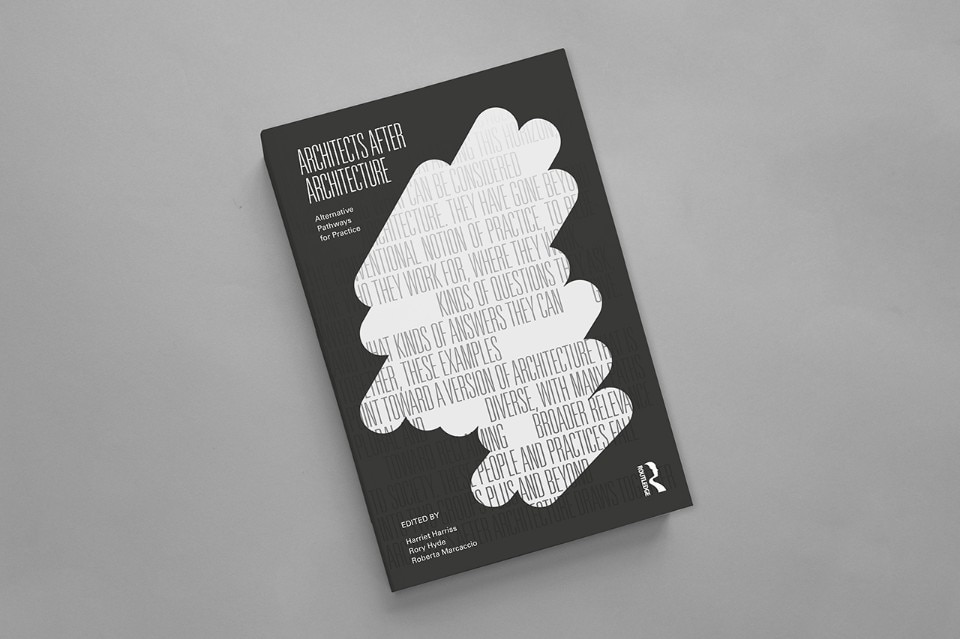
“The conventional architectural practice – with its masochistic culture, expectation of long working hours, limited flexibility, vast geneder pay gap, and cult of the master – has proven stubbornly resistant to adaptation,” the three editors state in the book's introduction.
To this human perspective on architects’ daily lives we must add the growing realisation that too often architecture is used as a tool for an urban transformation that comes about simply for the profit of investors, and is a contributing factor to growing social inequalities.
In this situation, an increasing number of designers, studios and collectives are trying to distance themselves from this vision. Taken separately, these practices may seem like isolated cases. But if contextualised and grouped together, they can show how in recent years – especially after the financial crisis of 2008 – there is a movement “towards a version of architecture that is plural and diverse, with many paths toward reclaiming broader relevance to society”.
The conventional architectural practice – with its masochistic culture, expectation of long working hours, limited flexibility, vast geneder pay gap, and cult of the master – has proven stubbornly resistant to adaptation leading many to leave
Architects After Architecture is a collection of personal statements and conversations with some of the contemporary architects who are redefining the discipline. These figures are synthetically grouped into two categories: “Plus”, those who combine traditional practice, i.e. the construction of buildings, with experimental actions, research or civil activism; “Beyond”, instead, includes all those who have abandoned the classical paths of architecture to work in areas that tangentially touch upon those of design.
In the former we find Assemble, a now famous interdisciplinary collective whose 22 members hybridise different fields of art, design and architecture to develop projects with high social impact. Among those who have pushed the boundaries of architecture is undoubtedly the Forensic Architecture research lab, which puts the discipline at the service of justice and truth, with an unusual combination of architecture, visual arts and investigative journalism. Their spatial analyses enable the study of conflicts and crimes from an unprecedented perspective.
In addition to these, we find many architects, offices, researchers and activists from different generations: from Ant Farm to Rotor, from Jack Self to Studio Folder, from Peggy Deamer to Malkit Shoshan.
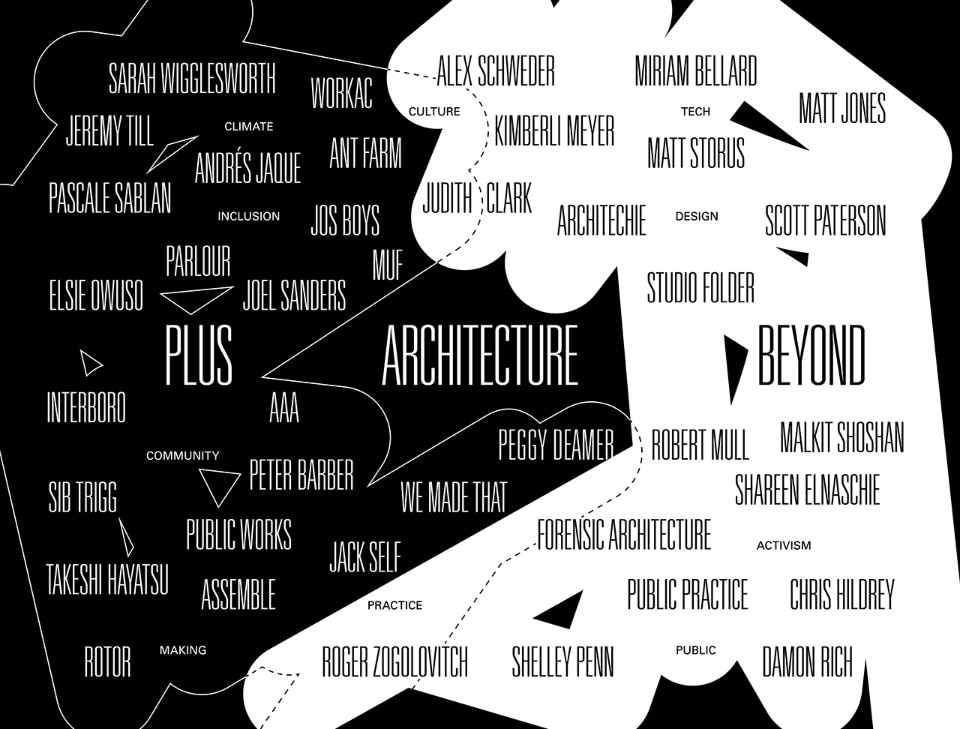
In addition to its capacity to bring together some of the most relevant contemporary critical spatial practices, the book succeeds in exploring this context from a variety of perspectives, thanks also to the autobiographical accounts of the architects involved, which also reveal some fundamental “behind the scenes” work. The risk of falling back on uncritical self-celebration of new forms of agency related to architecture is avoided.
Finally, it is interesting to note some parallels with the recent book Contro L’Oggetto (Against the Object) by Emanuele Quinz, which brings together three generations of product designers capable of interpreting design in a different way from the mainstream, which over time has degenerated into a loop of production-distribution-consumption-obsolescence.
Together, the two books make it clear how fundamental a radical change in the entire design landscape is. Harriss, Hyde and Marcaccio offer us an encouraging perspective (quoting Canadian designer Bruce Mau): “If you think about architecture as a methodology – independent from the outcome – you would see that architecture has a deep culture of synthesis informed by civic values. If you have that capacity, that’s the most valuable capacity of this time in history.”
Cover image: Installation view of Andrés Jaque/Office for Political Innovation’s COSMO, winning design of the 2015 Young Architects Program, at MoMA PS1. Photo Miguel de Guzman


